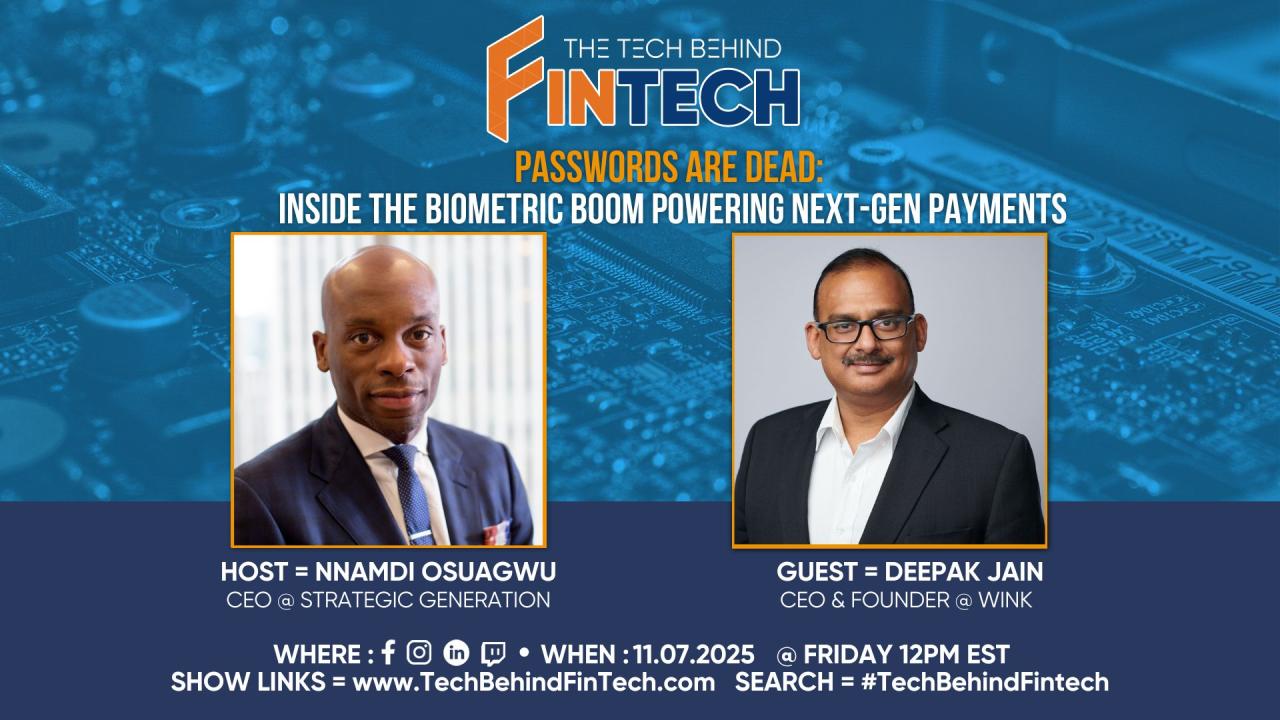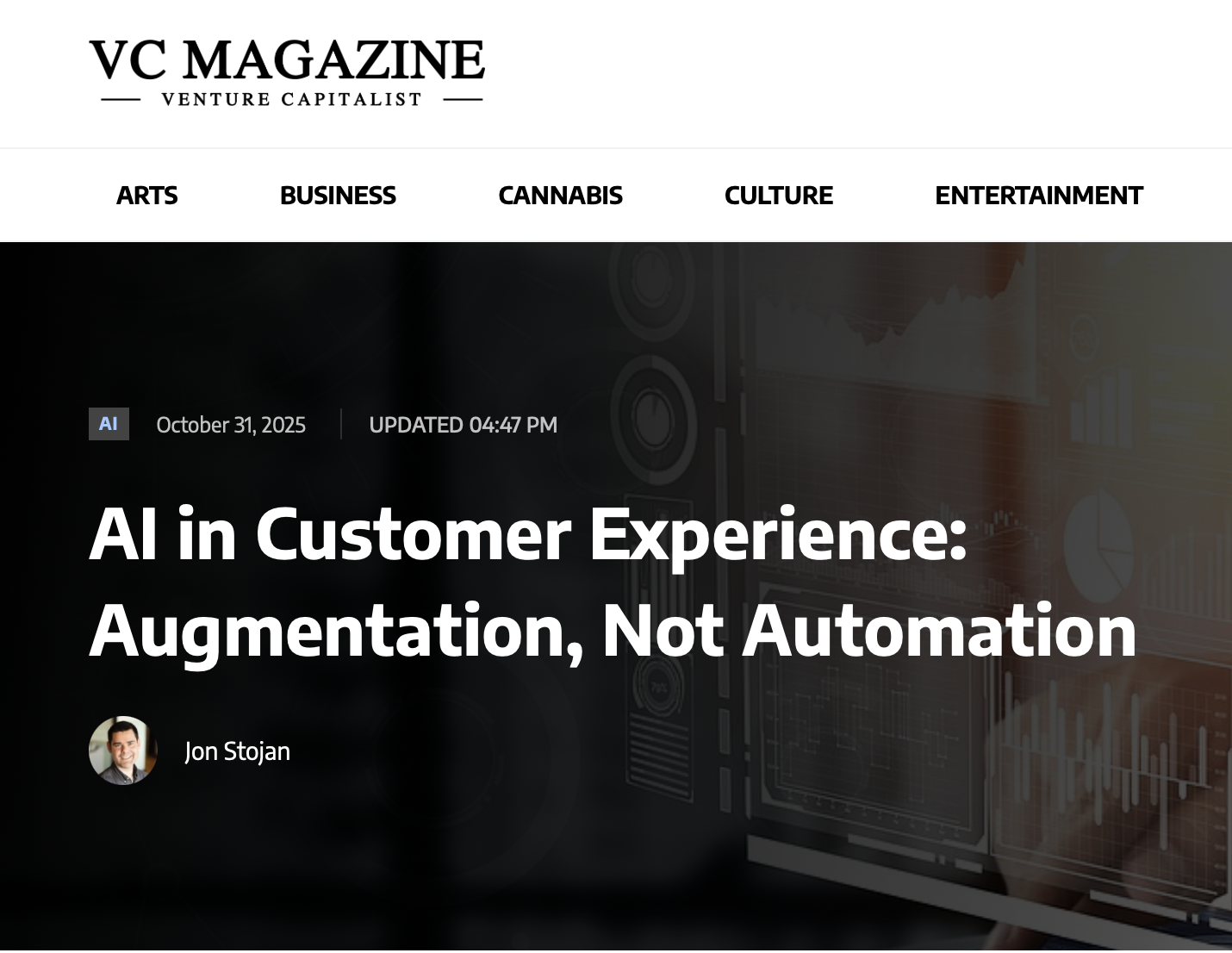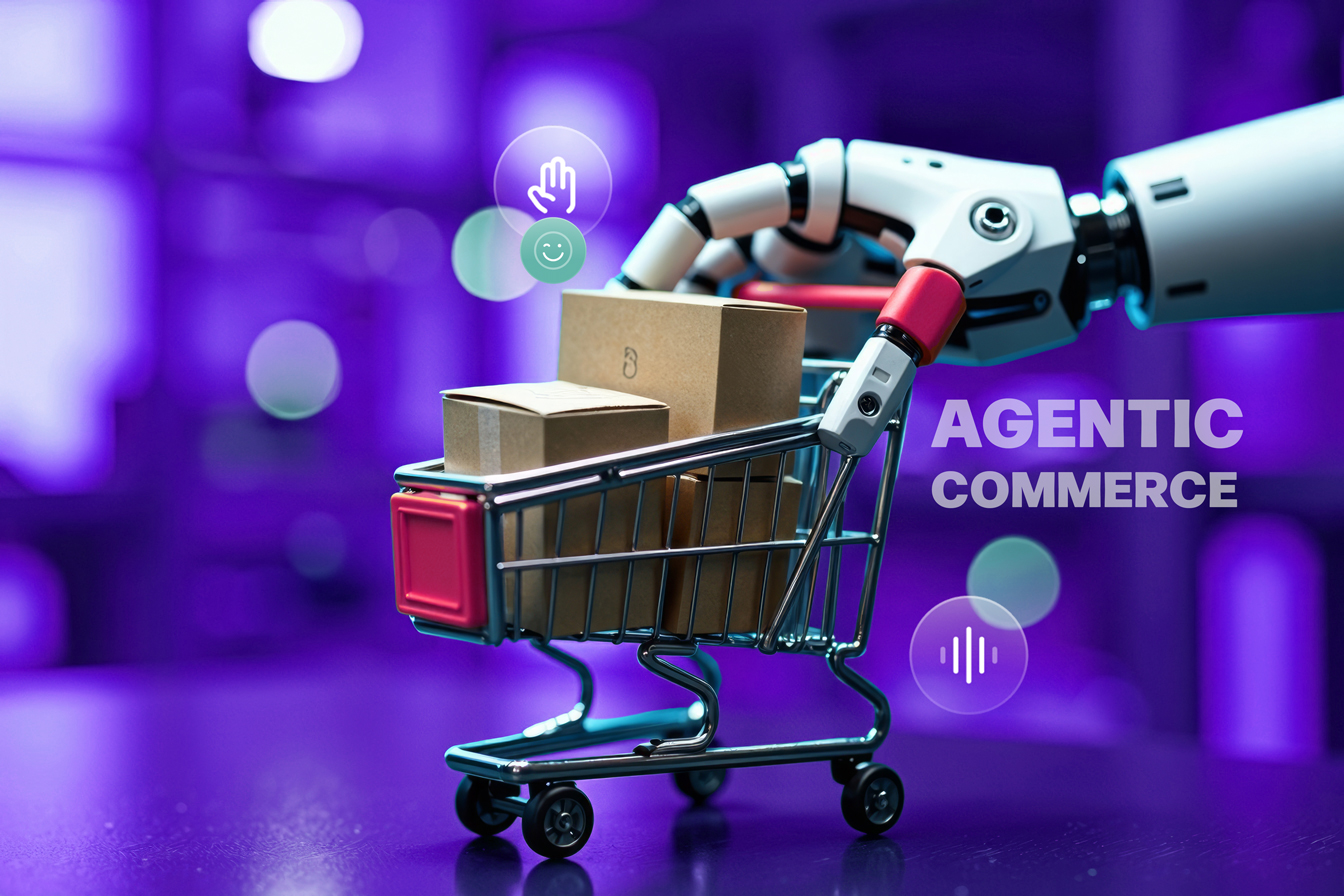Passwords Are Dead: Deepak Jain on the Biometric Future of Commerce
Identity, Payments, and the Future of Commerce: Wink CEO Deepak Jain on Biometric Update
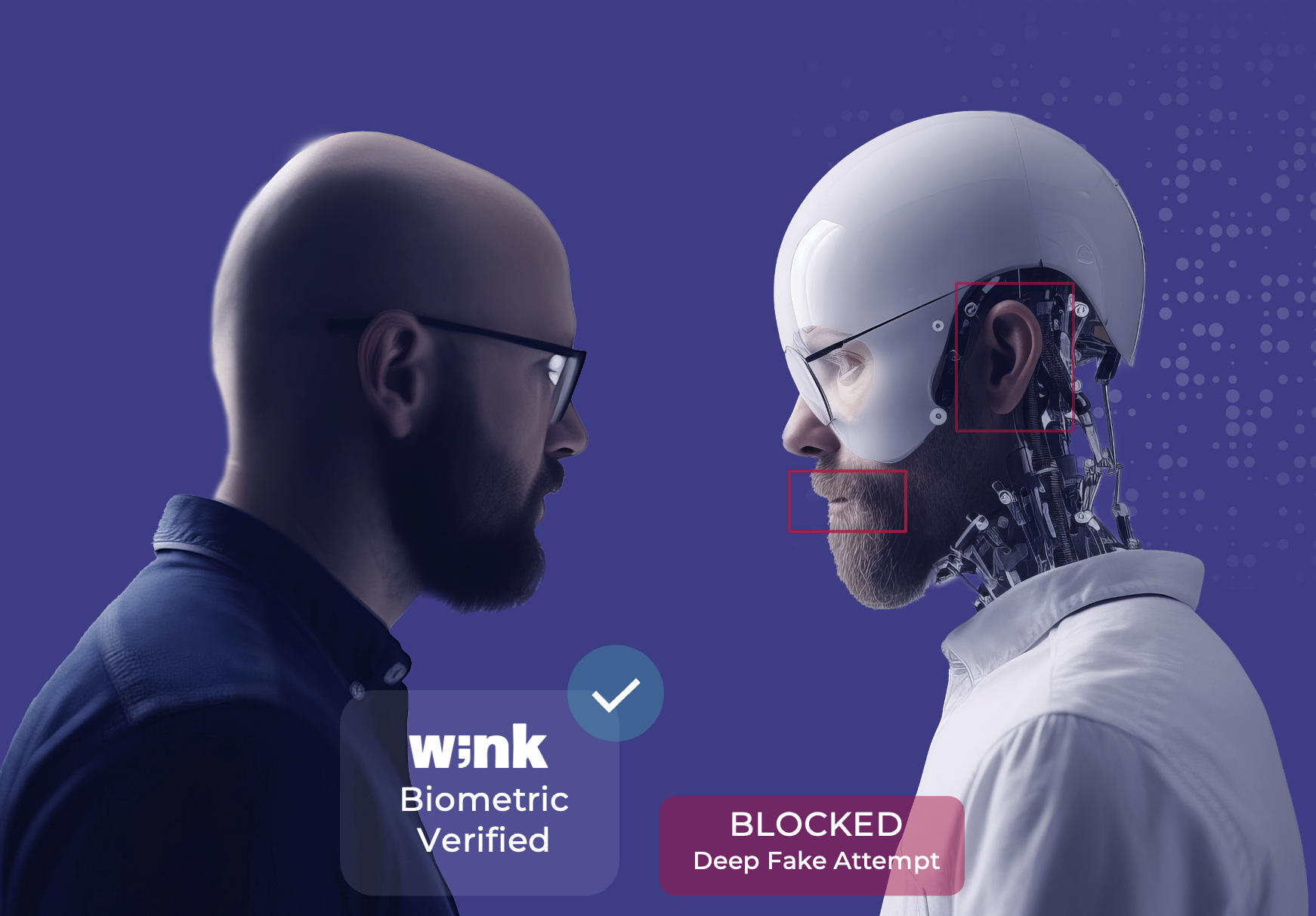
Originally featured on Biometric Update's Podcast; September 26, 2025
Biometrics are no longer futuristic—they’re quickly becoming the foundation of modern commerce. In a recent Biometric Update Podcast, Wink CEO Deepak Jain shared how identity is redefining payments, why trust is the new currency, and what’s next for businesses navigating the rise of AI-driven commerce.
“Wink provides the framework to enable the trust layer, but the financial institution or the merchant should be able to control how the user experience looks, so they can take advantage of that trust relationship with their consumer.” — Deepak Jain
The conversation traces the arc of how commerce is evolving—from Wink’s merger with Phoenix Managed Networks and the strength of combining payment infrastructure with biometrics, to the rise of device-agnostic, omnichannel biometric checkout that works seamlessly online and in-store. Jain explores how identity-powered payments reduce fraud while creating more natural customer experiences. He also looks ahead to the next frontier: agentic commerce, where AI-powered agents transact independently but still require biometric confirmation of human intent. Together, these themes underscore why fraud prevention, trust, and identity will define the future of global payments.
Key Highlights from the Conversation
1. Strengthening Payments Infrastructure Through the Phoenix Merger
Wink’s merger with Phoenix Managed Networks brings together two powerful strengths: Phoenix’s trusted payments infrastructure and merchant footprint with Wink’s next-generation biometric technology. Phoenix’s long-standing connectivity to major acquirers, processors, and ISOs gives Wink the reach and reliability to scale quickly, while Wink injects a new layer of security and seamless identity verification into those existing networks.
Together, the merged company can offer merchants something unique: the stability of proven payment rails paired with the innovation of biometric checkout, ensuring both reliability and modernization at scale.
“We saw the immense penetration Phoenix Managed Networks had in the U.S. market, with premium ISO customers and connectivity to all major acquirers and processors. Coupled with Wink’s technology, it’s a solid foundation to upgrade merchant and consumer experiences.” — Deepak Jain
2. Omnichannel Biometric Checkout Across Devices
Future-ready checkout isn’t just about replacing passwords; it’s about being everywhere commerce happens. Consumers expect seamless experiences across channels, and Wink delivers by being both device-agnostic and omnichannel. From ecommerce to kiosks, from mobile apps to shared employee devices, Wink integrates biometrics into every touchpoint.
As Deepak put it:
“If you’re only authenticating on one channel or one device, you’re already behind. Wink works across voice, face, and palm—and across ecommerce, in-store, kiosks, and even shared devices. Commerce today is omnichannel, and identity has to be too.” — Deepak Jain
Whether it’s online checkout, in-store kiosks, or employee access on shared devices, Wink ensures biometrics work seamlessly across every interaction. This flexibility means merchants can adopt biometrics without forcing expensive infrastructure changes, while still offering fast, familiar checkout experiences.
3. Agentic Commerce and Personhood: Biometrics as the Anchor
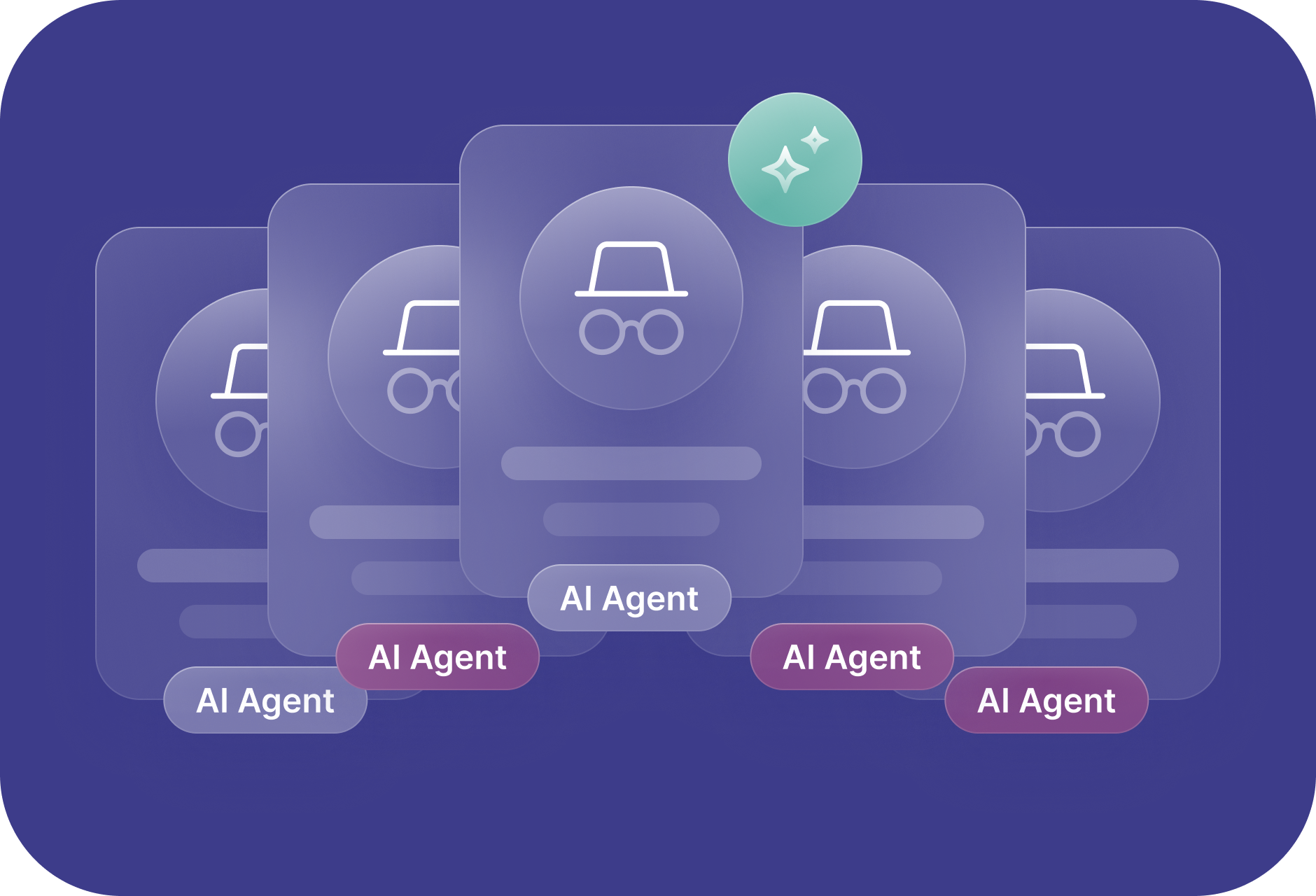
AI-driven agents are becoming part of everyday commerce, automating tasks like reorders, subscriptions, or even payments. But who’s really in charge and how do we ensure humans stay in control? Deepak stressed that biometrics will be the anchor of personhood in this new era:
“Agents can act independently, but they shouldn’t buy anything anytime. The consumer still has to confirm—with a face scan, a voice prompt, a palm check. Biometrics become the anchor of personhood in an agent-driven economy.” — Deepak Jain
Without this safeguard, agents could become a new vector for fraud and misuse. With biometrics, consumers remain in control.
4. Biometrics as the Future of Fraud Prevention
Traditional security layers—passwords, PINs, one-time codes—introduce friction but still fail to block fraud. Wink flips this equation. By embedding multimodal biometrics (face, voice, palm) directly into the payment flow, merchants can eliminate weak credentials and drastically reduce fraud risk.
Deepak emphasized that by inserting biometrics, you're already taking a huge leap forward over today's payment systems. Fraud today comes from stolen cards or 16-digit numbers. Biometrics changes that, and with liveness detection and cybersecurity protections, we're staying ahead of threats like deepfakes.
The takeaway: biometrics don’t just improve security—they make commerce simpler, faster, and safer for everyone involved.
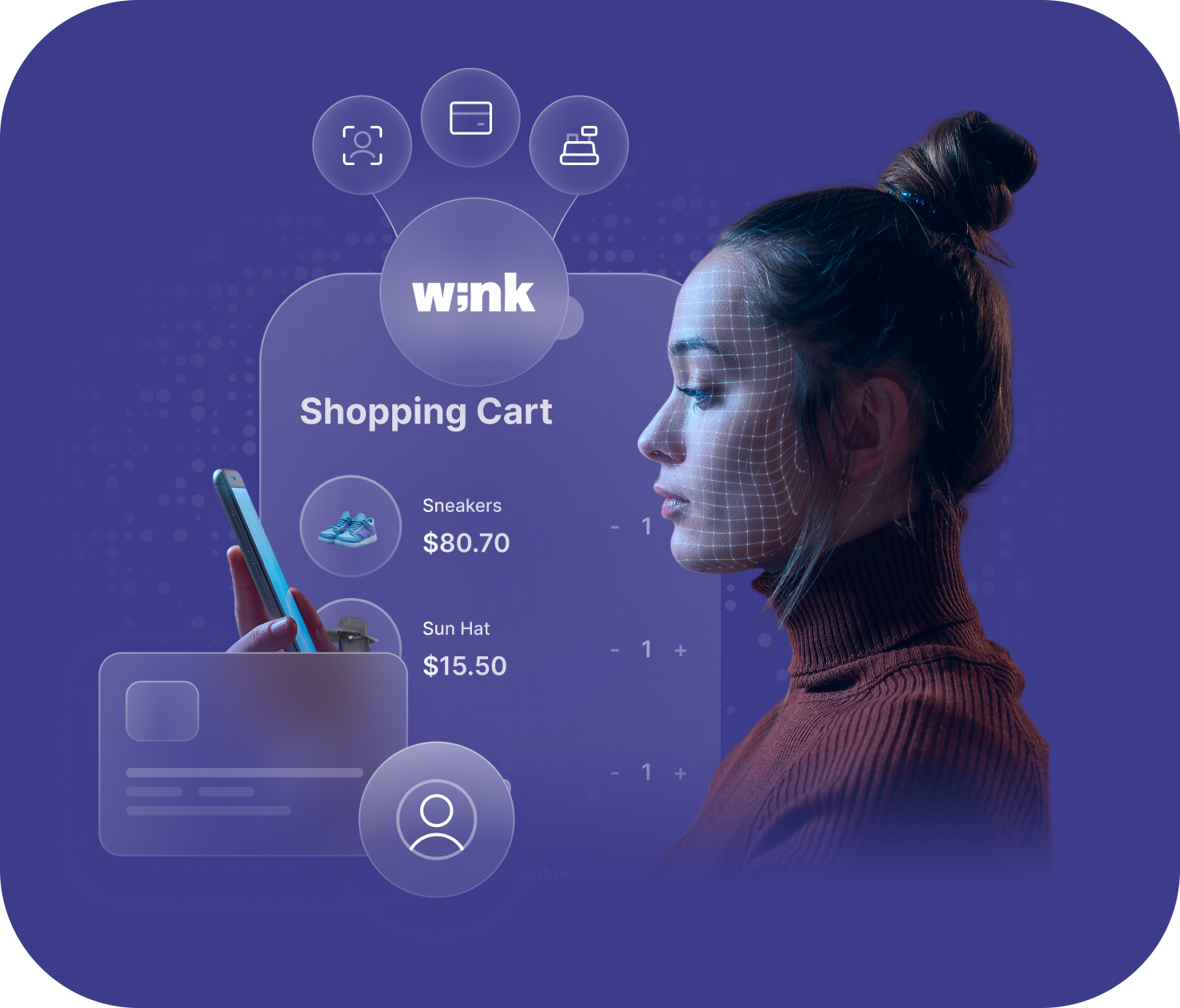
Why This Matters Now
The global biometric payments market is projected to exceed $3 trillion in mobile transactions by 2025. As Jain highlights, the question isn’t if identity will power commerce, but who will lead in defining the trust layer for it.
“The real competition isn’t about technology—it’s about trust. Whoever earns that trust, wins the future of commerce.” — Deepak Jain
At Wink, we believe identity-powered commerce is inevitable—and the companies who embrace it now will define the next decade of payments.
Listen to the full episode here
Explore Wink’s biometric authentication solutions
Contact our team to see how Wink can modernize your checkout experience


